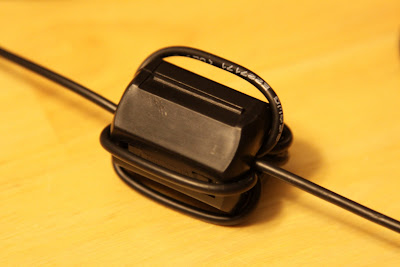I am interested in experimenting with antenna designs, and those that have properties which make them useful for temporary field usage are interesting.
This post is about the construction and measurements of a Resonant Feedline Dipole cut for the 10M band.
The central feed point of the dipole is the open end of the coax . The extended center conductor acts as one half of the dipole. The coax's shield from the "open end" back to the common mode choke acts as the other half of the dipole. Power is delivered to the feed point within the coax its self in the usual way coax transfers power. The choke's distance and extended conductor's length are selected in the usual way.
 |
| 10M Resonant Feedline Dipole |
 |
| Center with temporary strengthening strain relief. |
 |
| 5 turn Choke |
 |
| VNA 2180 |
 |
| Full Sweep 1MHz to 30MHz showing resonance in 10M band |
SWR is the red line in the above figure and the length 7ft 8.25in resulted in resonance being placed in the middle of the 10M band.
The smith chart below shows the input impedance with the antenna connected directly to the analyzer. The second chart shows the change in input impedance with an extended (25ft) feedline. The observation that the impendence versus frequency is somewhat similar asside from a rotation around the chart illustrates the the choke is nearly sufficient to "cut off" the sheld dipole arm.
 |
| 10M RFD with short (6ft) feedline |
 |
| 10M RFD with long (25ft) feedline |
I connected up the iCOM IC7000 and verified that it too saw the same SWR as the VNA.
I can foresee that this form of antenna could be quite handy. It is very simple, light weight and easy to put up either as a sloper, flat top, or even a vertical. Other bands will need seperate versions, obvious changes are needed to strengthen the center connection and higher choke inductance is needed, espically at lower bands.
73
VE3IAC







